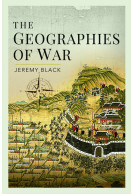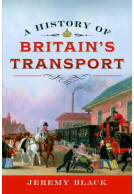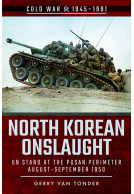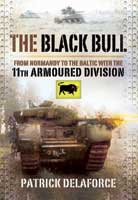Cavalry: A Global History (Hardback)
Imprint: Pen & Sword Military
Pages: 256
ISBN: 9781399060899
Published: 7th June 2023
(click here for international delivery rates)
Order within the next 1 hour, 42 minutes to get your order processed the next working day!
Need a currency converter? Check XE.com for live rates
| Other formats available - Buy the Hardback and get the eBook for £1.99! | Price |
|---|---|
| Cavalry: A Global History ePub (1.1 MB) Add to Basket | £6.99 |
An original and unique work that will fill a huge gap in the field of military history, and be of interest to both scholars and general readers.
It is a picture of the universal role of cavalry in warfare from earliest times to the present – and future. It covers the role of horses and essential mobility in ‘shock action’, in warfare in the classical world, in the major civilisations of China and India, Steppe cavalry, in the Middle Ages with Islamic and European conflict, the ‘social politics’ in Christendom with knightly valour, and war with non-Christian forces including the Muslim invasion of Europe, Islamic Spain, and conflict with the Mongols. The early modern period covers Asia and North Africa and the Ottomans – a major field of warfare continuing up to the modern period – and the time is notable for the introduction of horses in the Americas – a new phase in cavalry history. The modern period from Napoleon to the First World War is the history of the mobility of cavalry in European warfare and in imperial expansion and empire-building, but the concept of cavalry ‘redundancy’ arises in the maelstrom of 1914-1918 with artillery bombardment, trench warfare and the role of infantry. The long ‘transition’ period leading up the present and future is important for cavalry and the development of tanks. And here is a fascinating and original concept of cavalry ‘transformation’ and not cavalry ‘survivalism’, with modern and post-modern development of drone warfare – from horses to drones – as a ‘new cavalry’ for reconnaissance and combat.
Those familiar with the books of Professor Jeremy Black will not be surprised that this work is, if the reader will excuse the pun, a gallop through the centuries. Beginning in the classical period (up to 350 AD), the author takes us through the periods 350-1150 AD, 1150-1500, then moves through the sixteenth, seventeenth and eighteenth centuries; the final chapters cover the long nineteenth century, 1914-45, and the story since 1945. The opening chapter considers problems of periodization in military history, different types of horses, regions in which cavalry were most prevalent, the forage required, and the influence of different types of terrain.
ALARIC SEARLE Zentrum für Militärgeschichte und Sozialwissenschaften, der Bundeswehr, Potsdam
The “global perspective” is especially useful in highlighting some important points of continuity. One of the most obvious, but nonetheless often ignored, is that of forage. One of the major challenges for cavalry was obtaining enough forage to sustain horses throughout a campaign. The lack of availability of forage during the winter months put an obvious limit on operations; not surprisingly, one obvious way of hindering cavalry armies was to adopt scorched-earth policies. While fodder could be carried, the pack animals also required supplying, rendering this approach extremely expensive. The reverse side of the coin was that cavalry often played a role in cutting off opposing armies from their supplies. Needless to say, climatic conditions have varied across the globe, with the campaigning season in northern India, for instance, being halted in the fall by monsoon rains, but then resuming in the winter.
Another obvious point, which has constantly influenced the employment of cavalry, has been the requirement for water supplies. As Black puts it: “Unlike with grass, this need posed a potential conflict with human requirements.” (20) The necessity of water dogged cavalry forces as a major source of vulnerability. Still, as in the case of forage, light cavalry was often employed in an attempt to deny the enemy access to this essential requirement. Furthermore, provision did not always come from above: not only did rainfall render roads impassable, it could damage feed.
The author’s scholarly approach leads him to warn of the dangers of inadequate source material or, at least, the importance of consulting sources from both sides when analyzing a battle. Most notably in the case of clashes in antiquity and the medieval periods, the causes of victory and defeat could be quite complex. Surviving participants could either deliberately or inadvertently ascribe an outcome to the role of cavalry when there were multiple factors at play. Black also reminds us that many accounts of cavalry action end up underestimating their critical role in reconnaissance.
Another feature of this account is the consideration of the evolution of cavalry forces in terms of their equipment. A significant development was the introduction of the stirrup, the first evidence of which was in Central Asia in the first century AD which, in turn, led to the employment of couched lances, as well as the introduction of wrap-around saddles, and straps to fix heavier saddles to the horse, followed by chainmail and armor for knights. By the sixteenth century in Europe, cavalry were wielding firearms. But, as Professor Black points out, technological developments did not advance evenly, and their significance could vary greatly, depending on the region and the circumstances.
With this sweeping account of the subject, inevitably some aspects are only touched on in passing. One of these is what might be described as the “cavalry spirit,” a phenomenon subject to considerable change across the medieval and modern periods. But detailed source investigation for specific periods is not the author’s aim. What he achieves is cautioning against Eurocentric views by highlighting that, for example, within a global context, non-Western forces were not usually employed against Western forces in Africa and Asia, lending cavalry a different significance. In short: “Military progress… was certainly not a monopoly of Western states nor uni-directional.” (134)
So, given the publication of several recent histories of cavalry, does this work offer anything new? At first glance, the brevity of the treatment of what is a vast subject might suggest that little originality might be expected. On closer inspection, however, it becomes clear that Black, utilizing a range of primary and secondary sources, offers stimulating insights and a genuinely global coverage. In short, this is not a mere “overview” of the subject. It would provide an excellent starting point for any doctoral student considering delving deeper into individual aspects of this significant topic. Through its integration into the analysis of major debates such as the Military Revolution, awareness of the changing meanings of terminology, and balance between different geographical regions, it is a thought-provoking study which demonstrates some of the possibilities of a global approach to military history.
An a seminal, original, and ground-breaking work of impeccable scholarship, "Cavalry: A Global History" will fill a significant gap in the field of military history, and be of immense interest and value students, academia, military buffs, and non-specialist general readers with an interest in the subject. "Cavalry: A Global History" provides a comprehensive history of the universal role of cavalry in warfare from earliest times to the present -- and future! Enhanced with the inclusion of a one page bibliography of Selected Further reading, twelve pages of Notes, and a nine page Index, "Cavalry: A Global History" is an essential pick for community and college/university library Military History collections and supplemental curriculum studies lists.
Midwest Book Review
Read the full review here
About Jeremy Black
Jeremy Black has been described as ‘the most prolific historical scholar of our age’. He has researched and written widely on British history, politics, including political ideas, and international relations, from the 17th and 18th century to the present, and especially on military history.
He obtained a starred First in History at Queens College, Cambridge followed by postgraduate work at St John’s and Merton Colleges, Oxford and was Professor of History at the Universities of Durham and then Exeter, and is now Emeritus Professor of History at Exeter University. He is senior fellow at the Center for the Study of America and the West at the Foreign Policy Research Institute in Philadelphia and at the British Foreign Policy Group. He is a non resident senior fellow in the national security program.
He has lectured extensively in various British Commonwealth countries, Europe and the USA. He has served as archives editor, council member of prestigious academic and research bodies like Royal Historical Society and the British Records Association and on editorial boards of numerous history journals - History Today, RUSI Journal, International Review of Military History, Media History etc. He has numerous honours including the MBE. From 2024 Jeremy has been Distinguished Fellow in the Center for Military History and Strategy at Hillsdale College.




















